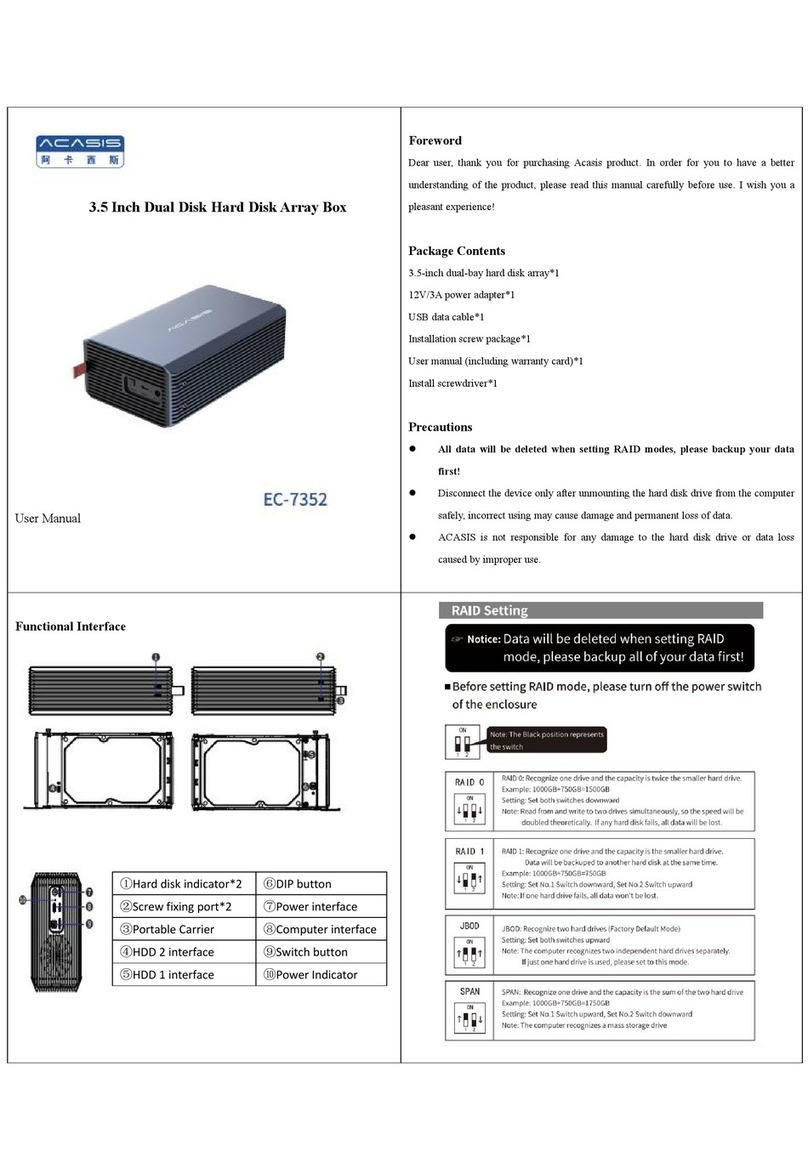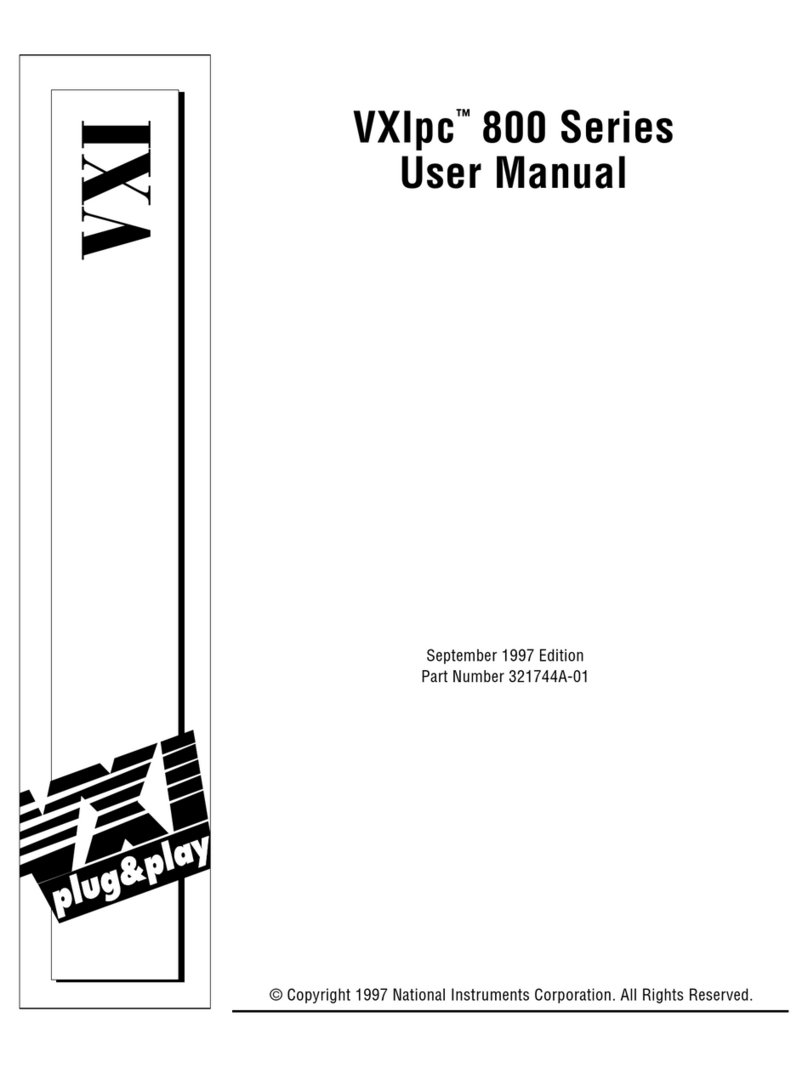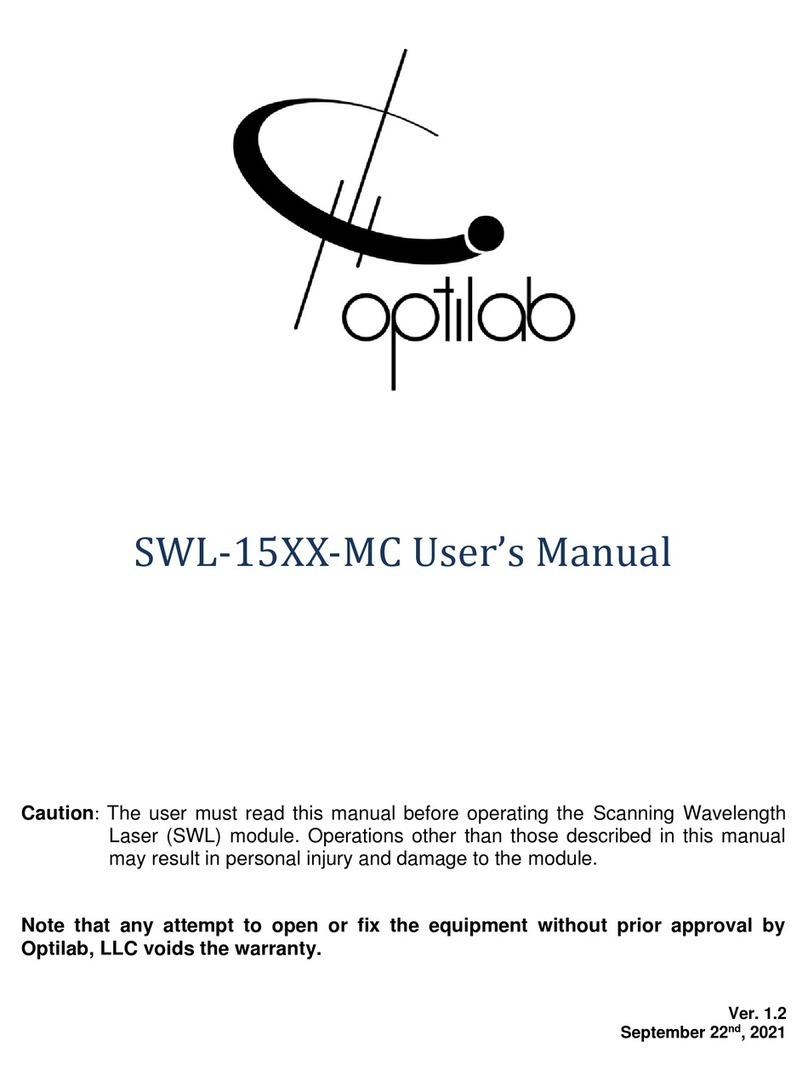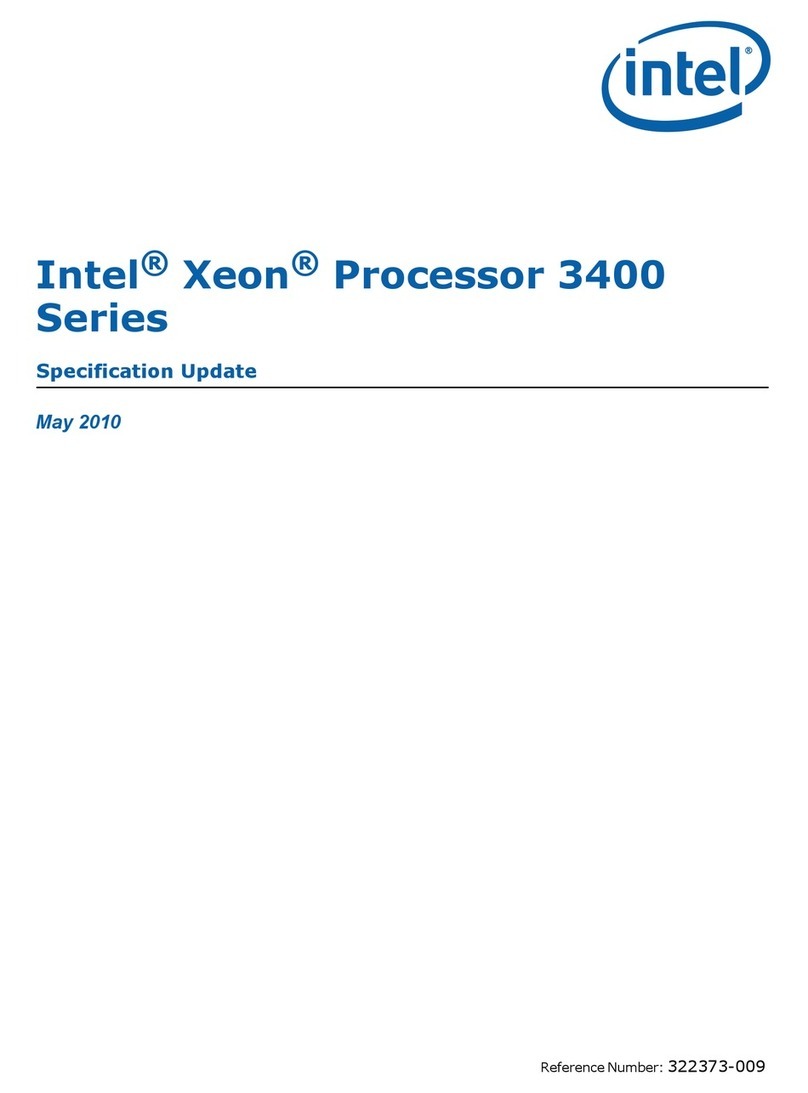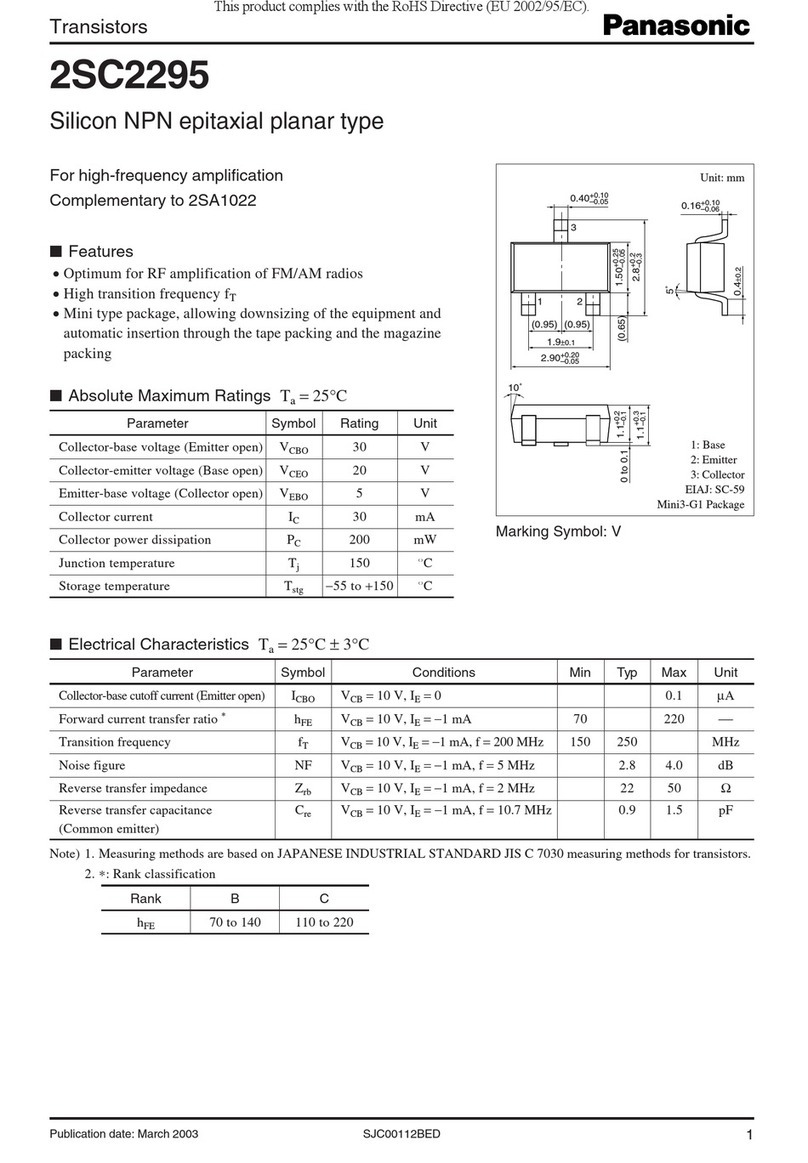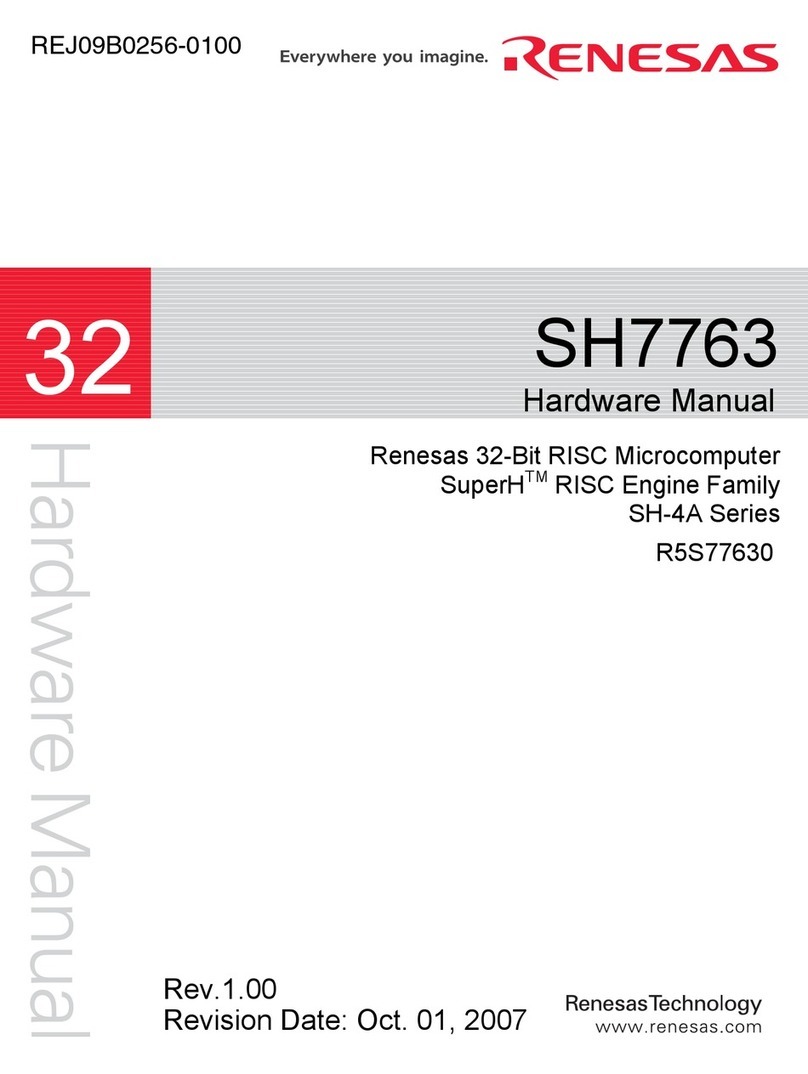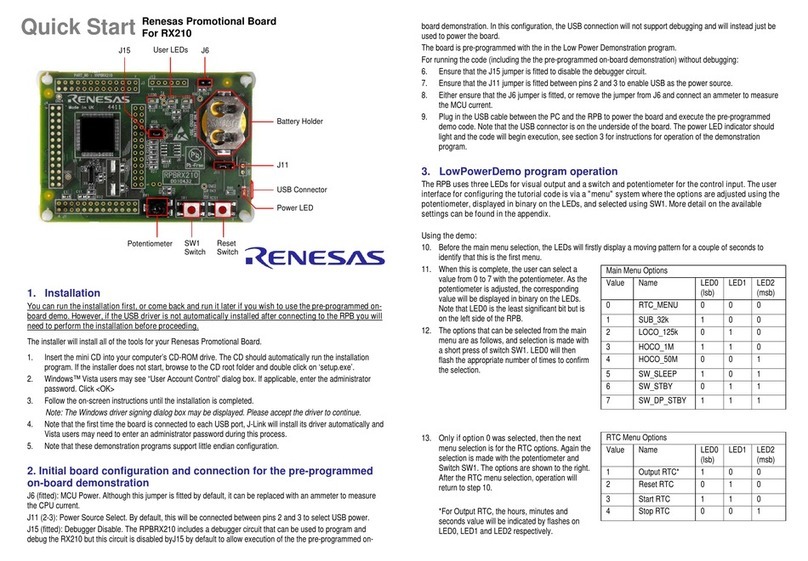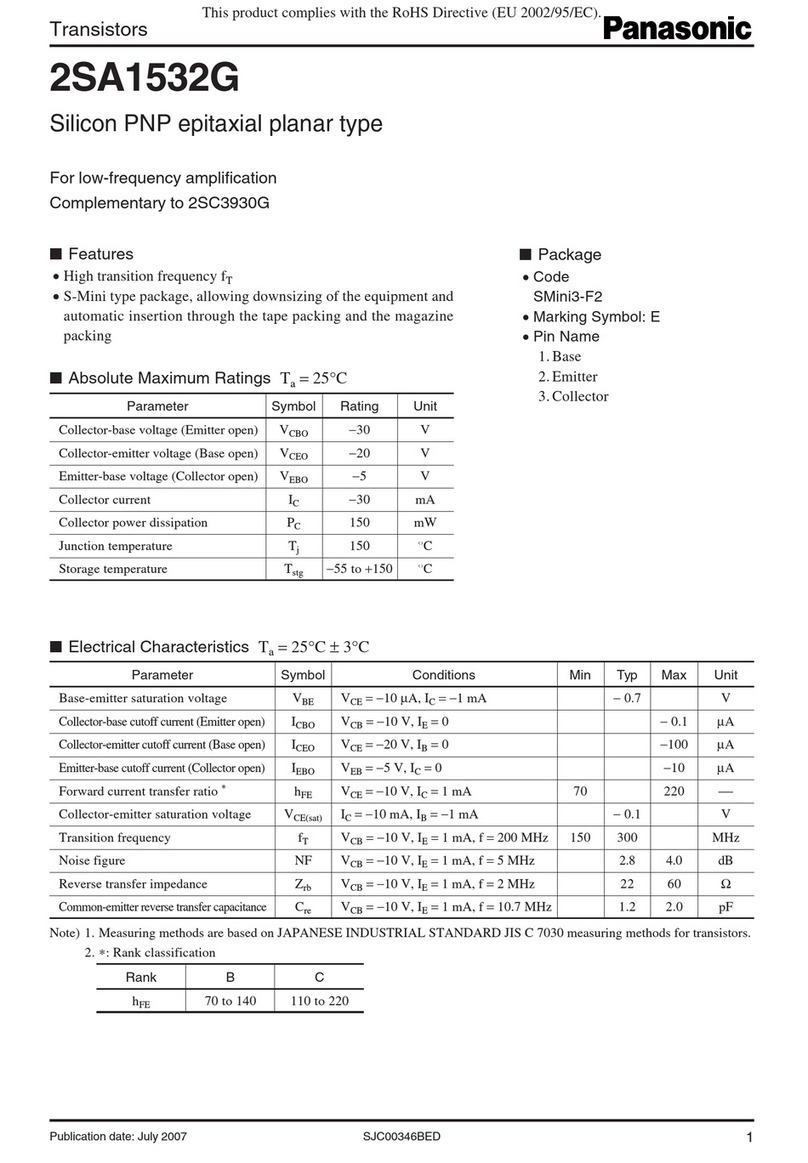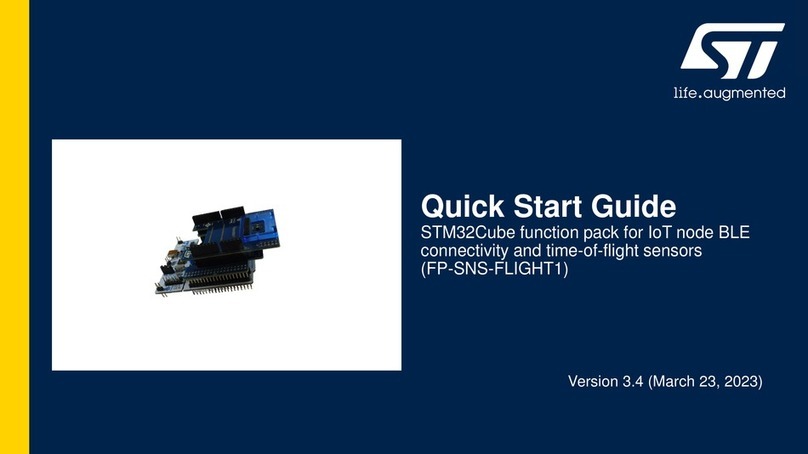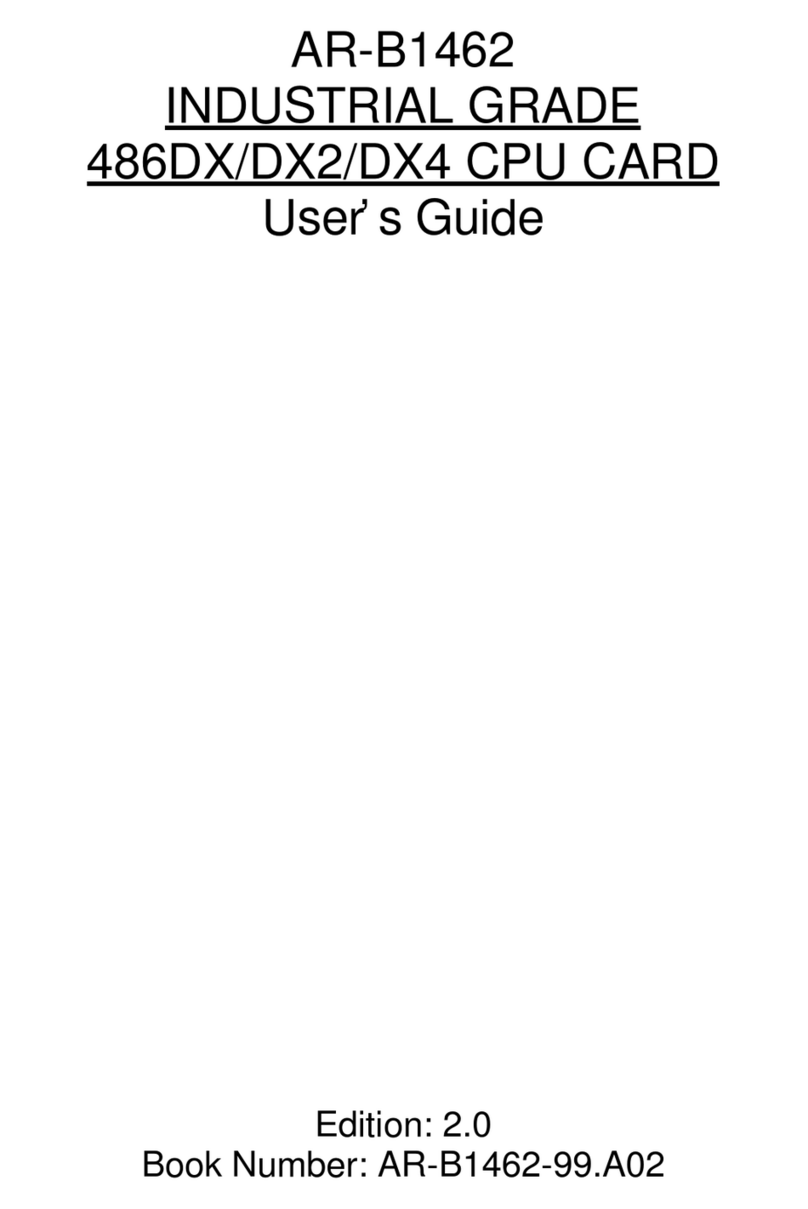Digilent D2-FT User manual

D
Di
ig
gi
il
le
en
nt
t
D
D2
2-
-F
FT
T
S
Sy
ys
st
te
em
m
B
Bo
oa
ar
rd
d
R
Re
ef
fe
er
re
en
nc
ce
e
M
Ma
an
nu
ua
al
l
www.digilentinc.com
December 6, 2004 246 East Main | Pullman, WA 99163
(509) 334 6306 Voice and Fax
© Digilent, Inc. 7 pages Doc: 502-036
Overview
The Digilent D2-FT circuit board provides the
basis for a complete circuit development
platform centered on a Xilinx Spartan 2E
FPGA. D2-FT features include:
•A Xilinx XC2S300E FPGA with 300K
gates and 350MHz operation (also
available with the XC2S400E FPGA);
•172 user I/Os routed to six standard 40-
pin expansion connectors;
•A socket for a JTAG-programmable
18V02 configuration Flash ROM;
•Dual on-board 1.5A power regulators
(1.8V and 3.3V);
•An SMD 50MHz oscillator, and a socket
for a second oscillator;
•A JTAG programming port;
•A status LED and pushbutton for basic
I/O.
The D2-FT has been designed to work with all
versions of the Xilinx ISE CAD tools, including
the free WebPack tools available at Xilinx web
site. (www.xilinx.com) A growing collection of
low-cost expansion boards can be used with
the D2-FT to add analog and digital I/O
capabilities, as well as various data ports like
Ethernet and USB. The D2-FT board ships
with a power supply and programming cable,
so designs can be implemented immediately
without the need for any additional hardware.
Functional Description
The Digilab D2-FT provides a minimal system
that can be used to rapidly implement FPGA-
based circuits, or to gain exposure to Xilinx
CAD tools and Spartan 2E devices. The D2-FT
provides only the essential supporting devices
for the Spartan 2E FPGA, including clock
sources and power supplies. All available I/O
signals are routed to standard expansion
connectors that mate with 40-pin, 100 mil
spaced DIP headers available from any
catalog distributor. A pushbutton and LED are
also included for basic I/O.
The D2-FT board has been designed to serve
primarily as a host for peripheral boards. Each
of the six expansion connectors provides the
unregulated supply voltage (VU), 3.3V, GND,
and 32 I/O signals from the FPGA. Because
there are more connector pins than FPGA
pins, the A1 and B1 connectors share an 18-
pin bus. All other connector positions are
driven by individual FPGA signals. JTAG
signals are also routed to the A1, B1, and C1
expansion connectors. This allows peripheral
boards to drive the scan chain, or to be
configured along with the Spartan 2E FPGA.
Application-specific peripheral boards can be
created to mate with the D2-FT, or ready-made
peripheral boards that offer many standard I/O
and data port functions can be obtained from
Digilent (for a current listing of available
boards, see www.digilentinc.com).
PA bus
MA2 bus
A1 B2
B1
C1 C2
System Bus
MA1 bus
MB1 bus
PB bus
MC2 bus
PC2 bus
PC1 bus
A2
Clock
(50MHz)
Power
jack
5-9VDC
1.8VDC
regulator
Status
LED
Push
button
Configuration
(flash) ROM
3.3VDC
regulator
2ND
Clock
JTAG
Xilinx Spartan2E XC2S300E-FT256
Expansion Connectors
MB2 bus
MC1 bus
JTAG
JTAG
Figure 1. D2-FT Circuit Board Block Diagram

D2-FT Reference Manual Digilent, Inc.
www.digilentinc.com © Digilent, Inc. Page 2
JTAG Scan Chain and Device Configuration
The Spartan 2E FPGA, the 18V00 ROM on the
D2-FT, and any programmable devices on
peripheral boards attached to the D2-FT can
be programmed via their JTAG ports. The
JTAG scan chain is routed to the FPGA, the
ROM, and around the board to four connection
ports as shown in Figure 2 below. The primary
configuration port (Port 1) uses a standard 6-
pin JTAG header (J7) that can accommodate
Digilent’s JTAG3 cable (or cables from Xilinx or
other vendors). The other three JTAG
programming ports are bi-directional, and they
are available on the A1, B1, and C1 expansion
connectors. If no peripheral board is present, a
buffer on the D2-FT removes the expansion
connector from the JTAG chain. If a peripheral
board with a JTAG device is attached, the scan
chain is driven out the expansion connector so
that any JTAG-programmable parts can be
configured. If a Digilent port module is
connected to one of the three JTAG-enabled
expansion connectors, then the port module
can drive the JTAG chain to program all
devices in the scan chain (port modules
include Ethernet, USB, EPP parallel, and serial
modules -- see www.digilentinc.com for more
information).
The scan chain can be driven from the primary
port by powering on the D2-FT, connecting it to
a PC with a JTAG programming cable, and
running the “auto-detect” feature of the
configuration software. The configuration
software allows devices in the scan chain to be
selectively programmed with any available
configuration file. If no programming ROM is
loaded in the IC5 socket (or if ROM is present
but is not to be included in the scan chain),
jumper-shunts must be loaded at JP1 and JP2
in the “Bypass ROM” location to route the
JTAG chain around the ROM socket. If an
18V02 (or larger) ROM is loaded in the IC5
socket, it can be included in the scan chain by
loading the JP1 and JP2 jumper-shunts in the
“Include ROM” positions.
If a programming ROM is present in the IC5
socket, the FPGA will automatically access the
ROM for configuration data if jumper shunts
are loaded in all three positions of J8 (M2, M1,
and M0).
Port modules attached to ports A1, B1, or C1
can drive the scan chain if a jumper-shunt is
installed on the primary JTAG header across
the TDI and TDO pins. In their default state,
Digilent port modules will appear as a JTAG
cable to the configuration software. Port
modules can disable their JTAG drivers; if
more than one JTAG driver is enabled on the
scan chain, programming may fail.
A1
C2
Spartan 2E
FT 256
A2
B1 B2
18V
ROM
JTAG
connector
Cable bypass
jumper
ROM bypass
jumpers
Programming
mode select
jumpers C1
Port 1
Port 2
Port 3
Port 4
Figure 2. JTAG Signal Routing on D2-FT
Power Supplies
The D2-FT board uses two LM317 voltage
regulators to produce a 1.8VDC supply for the
Spartan 2E core, and 3.3VDC supply for the
I/O ring. Both regulators have good bypass
capacitance, allowing them to supply up to
1.5A of current with less than 50mV of noise
(typical). Power can be supplied from a low-
cost wall transformer supply. The external
supply must use a 2.1mm center-positive
connector, and it must produce between 6VDC
and 12VDC of unregulated voltage.
The D2-FT uses a four layer PCB, with the
inner layers dedicated to VCC and GND
planes. Most of the VCC plane is at 3.3V, with
an island under the FPGA at 1.8V. The FPGA
and the other ICs on the board all have
0.047uF bypass capacitors placed as close as
possible to each VCC pin.

D2-FT Reference Manual Digilent, Inc.
www.digilentinc.com © Digilent, Inc. Page 3
Total board current is dependant on FPGA
configuration, clock frequency, and external
connections. In test circuits with roughly 50K
gates routed, a 50MHz clock source, and a
single expansion board attached (the DIO5
board), approximately 200mA +/- 30% of
supply current is drawn from the 1.8V supply,
and approximately 200mA +/- 50% is drawn
from the 3.3V supply. These currents are
strongly dependent on FPGA and peripheral
board configurations.
All FPGA I/O signals use the VCCO voltage
derived from the 3.3V supply. If other VCCO
voltages are required, the regulator output can
be modified by changing R12 according to:
VCCO = 1.25(1 + R12/R11).
Refer to the LM317 data sheet and D2-FT
schematic for further information.
Oscillators
The D2-FT provides a 50MHz SMD primary
oscillator and a socket for a second oscillator.
The primary oscillator is connected to the
GLK2 input of the Spartan 2E (pin B8), and the
secondary oscillator is connected to GCLK3
(pin C8). Both clock inputs can drive the DLL
on the Spartan 2E, allowing for internal
frequencies up to four times higher than the
external clock signals. Any 3.3V oscillator in a
half-size DIP package can be loaded into the
secondary oscillator socket.
Pushbutton and LED
A single pushbutton and LED are provided on
the board allowing basic status and control
functions to be implemented without a
peripheral board. As examples, the LED can
be illuminated from a signal in the FPGA to
verify that configuration has been successful,
and the pushbutton can be used to provide a
basic reset function independent of other
inputs. The circuits are shown in Figure 3.
Vdd
4.7K
4.7K
Push
button
80 Ohm
Xilinx
Spartan 2E
FT 256
Pin A12
Pin C15
Figure 3. LED and Pushbutton Circuit
Expansion Connectors
The six expansion connectors labeled A1-A2,
B1-B2, and C1-C2 use 2x20 right-angle
headers with100 mil spacing. All six
connectors have GND on pin 1, VU on pin 2,
and 3.3V on pin 3. Pins 4-35 route to FPGA I/O
signals, and pins 36-40 are reserved for JTAG
and/or clock signals. (See Figure 4)
The expansion headers provide 192 signal
connections, and the Spartan 2E-FT256 has
172 available I/O signals. Thus, some FPGA
signals are routed to more than one connector.
The lower 18 pins (pins 4-21) of the A1and B1
connectors are connected to the same 18
FPGA pins, and they are designated as the
“system bus” (a unique chip select signal is
routed to each connector). Other than these 18
shared signals, all remaining FPGA signals are
routed to individual expansion connector
positions.
The lower 18 pins of the A2, B2, and C2
connectors are designated as “peripheral
busses”, and each of these busses (named
PA, PB, and PC) use 18 unique signals. The
14 upper pins of each expansion connector
(pins 22-35) have been designated as “module
busses”. Each connector has a fully populated
module bus (named MA1, MA2, MB1, MB2,
MC1, and MC2).
System Bus
The “system bus” is a protocol used by certain
expansion boards that mimics a simple 8-bit
microprocessor bus. It uses eight data lines,
six address lines, a write-enable (WE) strobe
that can be used by the peripheral to latch

D2-FT Reference Manual Digilent, Inc.
www.digilentinc.com © Digilent, Inc. Page 4
written data, an output-enable (OE) strobe that
can be used by the peripheral to enable read
data, a chip select, and a clock to enable
synchronous transfers. System bus timings
can be used to configure the lower 18 pins of
the A1, B1, and C1 connectors (the lower 18
pins of A1 and B1 share the same FPGA pins).
The diagrams below show signal timings
assumed by Digilent to create peripheral
devices. However, any bus and timing models
can be used by modifying circuits in the FPGA
and attached peripheral devices.
tw
th
OE
CS
WE
DB0-DB7
th
teoe
tsu
tdoe
twd
th
OE
WE
DB0-DB7
teoe
tsu
tdoe
ten
Read data latch time
th
Write Cycle
Read Cycle
Figure 4. System Bus Timing
Table 1. System Bus Timing
Symbol Parameter Time (typ)
ten Time to enable after CS asserted 10ns
th Hold time 1ns
tdoe Time to disable after OE de-asserted 10ns
teoe Time to enable after OE asserted 15ns
tw Write strobe time 10ns
tsu Data setup time 5ns
twd Write disable time 0ns

D2-FT Reference Manual Digilent, Inc.
www.digilentinc.com © Digilent, Inc. Page 5
Pin 1: GND
Pin 2: VU
Pin 3: 3.3V
Pin 39
Pin 40
Pin 4
Pin 39
Pin 40
Figure 6. Expansion Connector Pin Locations
A1
pins 4 -21
Sys Bus (18)
A2
pins 22 -35 pins 4 -21 pins 22 -35
C2
pins 4 -21pins 22 -35
B1
pins 4 -21
B2
pins 22 -35 pins 4 -21 pins 22 -35
MA1 (14)
MA2(14)
MC2(14)
MC1(14) PA(18)
MB1(14)
PB(18)
PC(18)
Spartan 2E
FT 256
PC-SB(14)
MB2(14)
C1
pins 4 -21pins 22 -35
JTAG
Figure 5. Expansion Connector Signal Routing

D2-FT Reference Manual Digilent, Inc.
www.digilentinc.com © Digilent, Inc. Page 6
Table 2. D2-FT Expansion Connector Pinout
A1 A2 B1 B2 C1 C2
Pin #
Signal FPGA
Pin Signal FPGA
Pin Signal FPGA
Pin Signal FPGA
Pin Signal FPGA
Pin Signal FPGA
Pin
1 GND GND GND GND GND GND
2 VU VU VU VU VU VU
3 VCC33 VCC33 VCC33 VCC33 VCC33 VCC33
4 ADR0 J14 PAI01 B12 ADR0 J14 PBI01 M10 PCADR0 N3 PCI01 F2
5 DB0 K16 PAI02 C12 DB0 K16 PBI02 R11 PCDB0 P2 PCI02 E1
6 ADR1 K13 PAI03 A13 ADR1 K13 PBI03 P10 PCADR1 L5 PCI03 F4
7 DB1 K15 PAI04 D12 DB1 K15 PBI04 T10 PCDB1 N1 PCI04 E2
8 ADR2 K14 PAI05 B13 ADR2 K14 PBI05 N10 PCADR2 M3 PCI05 E3
9 DB2 L16 PAI06 A14 DB2 L16 PBI06 P9 PCDB2 N2 PCI06 D1
10 ADR3 K12 PAI07 E11 ADR3 K12 PBI07 R10 PCADR3 L4 PCI07 F5
11 DB3 L15 PAIO8 C16 DB3 L15 PBI08 N9 PCDB3 M1 PCI08 D2
12 ADR4 L14 PAI09 E13 ADR4 L14 PBI09 N8 PCADR4 L3 PCI09 D3
13 DB4 M16 PAI010 D14 DB4 M16 PBI010 R9 PCDB4 M2 PCI010 C1
14 ADR5 L13 PAI011 D16 ADR5 L13 PBI011 P8 PCADR5 K5 PCI011 E4
15 DB5 M15 PAI012 F12 DB5 M15 PBI012 R8 PCDB5 L1 PCI012 A3
16 WE M14 PAI013 D15 WE M14 PBI013 N7 PCWE K3 PCI013 C2
17 DB6 N16 PAI014 E14 DB6 N16 PBI014 T7 PCDB6 L2 PCI014 B3
18 OE L12 PAI015 E16 OE L12 PBI015 P7 PCOE K4 PCI015 C4
19 DB7 N15 PAI016 F13 DB7 N15 PBI016 R7 PCDB7 K1 PCI016 A4
20 CSA D8 PAI017 E15 CSB N14 PBI017 M7 PCCS J3 PCI017 DS
21 LSBCLK P16 PAI018 F14 LSBCLK P16 PBI018 T6 PCCLK K2 PCI018 B4
22 MA1DB0 D9 MA2DB0 F16 MB1DB0 M13 MB2DB0 P6 MC1DB0 J4 MC2DB0 C5
23 MA1DB1 A9 MA2DB1 G12 MB1DB1 T14 MB2DB1 R6 MC1DB1 J1 MC2DB1 A5
24 MA1DB2 C9 MA2DB2 F15 MB1DB2 N12 MB2DB2 N6 MC1DB2 J2 MC2DB2 E6
25 MA1DB3 B9 MA2DB3 G14 MB1DB3 R14 MB2DB3 T5 MC1DB3 H4 MC2DB3 B5
26 MA1DB4 D10 MA2DB4 G16 MB1DB4 P13 MB2DB4 P5 MC1DB4 H1 MC2DB4 C6
27 MA1DB5 A10 MA2DB5 G13 MB1DB5 T13 MB2DB5 R5 MC1DB5 H3 MC2DB5 A6
28 MA1DB6 C10 MA2DB6 G15 MB1DB6 M11 MB2DB6 M6 MC1DB6 H2 MC2DB6 D6
29 MA1DB7 B10 MA2DB7 H14 MB1DB7 R13 MB2DB7 T4 MC1DB7 G4 MC2DB7 B6
30 MA1ASTB E10 MA2ASTB H16
MB1AST P12 MB2AST P4 MC1ASTB G1 MC2ASTB C7
31 MA1DSTB A11 MA2DSTB H13
MB1DST T12 MB2DST R4 MC1DSTB G3 MC2DSTB A7
32 MA1WRT C11 MA2WRT H15 MB1WRT N11 MB2WRT N5 MC1WRT G2 MC2WRT D7
33 MA1WAIT B11 MA2WAIT J16 MB1WAIT R12
MB2WAIT T3 MC1WAIT G5 MC2WAIT E7
34 MA1RST D11 MA2RST J13 MB1RST P11
MB2RST M4 MC1RST F1 MC2RST B7
35 MA1INT A12 MA2INT J15 MB1INT T11 MB2INT P1 MC1INT F3 MC2INT A8
36 JTSELA JTSELB JTSELC
37 TMS TMS TMS
38 TCK TCK TCK
39 TDOA CLK0 T9 TDOB TDOC CLK1 T8
40 TDIA GND TDIB TDIC GND

D2-FT Reference Manual Digilent, Inc.
www.digilentinc.com © Digilent, Inc. Page 7
Table 3. D2-FT FPGA Pin Assignments
A B C D E F G H J K L M N P R T
1 GND TMS PC-
IO10
PC-
IO6
PC-
IO2
PC-
RST
MC1-
ASTB
MC1-
DB4
MC1-
DB1
PC-
DB7
PC-
DB5
PC-
DB3
PC-
DB1
MB2-
INT M1 GND
2 TCK GND PC-
IO13
PC-
IO8
PC-
IO4
PC-
IO1
MC1-
WRT
MC1-
DB6
MC1-
DB2
PC-
CLK
PC-
DB6
PC-
DB4
PC-
DB2
PC-
DB0 GND M0
3 PC-
IO12
PC-
IO14 VCCI PC-
IO9
PC-
IO5
MC1-
INT
MC1-
DSTB
MC1-
DB5
MC1-
CS
PC-
WE
PC-
ADR4
PC-
ADR2
PC-
ADR0 VCCI M2 MB2-
WAIT
4 PC-
IO16
PC-
IO18
PC-
IO15 VCCI PC-
IO11
PC-
IO3
MC1-
DB7
MC1-
DB3
MC1-
D80
PC-
OE
PC-
ADR3
MB2-
RST VCCI MB2-
ASTB
MB2-
DSTB
MB2-
DB7
5 MC2-
DB1
MC2-
DB3
MC2-
DB0
PC-
IO17 VCCI PC-
IO7
MC1-
WAIT VCCO VCCO PC-
ADR5
PC-
ADR1 VCCI MB2-
WRT
MB2-
DB4
MB2-
DB5
MB2-
DB3
6 MC2-
DB5
MC2-
DB7
MC2-
DB4
MC2-
DB6
MC2-
DB2 GND VCCO VCCO VCCO VCCO GND MB2-
DB6
MB2-
DB2
MB2-
DB0
MB2-
DB1
PB-
IO18
7 MC2-
DSTB
MC2-
RST
MC2-
ASTB
MC2-
WRT
MC2-
WAIT VCCO GND GND GND GND VCCO PB-
IO17
PB-
IO13
PB-
IO15
PB-
IO16
PB-
IO14
8 MC2-
INT GCK2 GCK3 CSA VCCO VCCO GND GND GND GND VCCO VCCO PB-
IO9
PB-
IO11
PB-
IO12
GCK1
9 MA1-
DB1
MA1-
DB3
MA1-
DB2
MA1-
DB0 VCCO VCCO GND GND GND GND VCCO VCCO PB-
IO8
PB-
IO6
PB-
IO10
GCK0
10 MA1-
DB5
MA1-
DB7
MA1-
DB6
MA1-
DB4
MA1-
ASTB VCCO GND GND GND GND VCCO PB-
IO1
PB-
IO5
PB-
IO3
PB-
IO7
PB-
IO4
11 MA1-
DSTB
MA1-
WAIT
MA1-
WRT
MA1-
RST
PA-
IO7 GND VCCO VCCO VCCO VCCO GND MB1-
DB6
MB1-
WRT
MB1-
RST PB-
IO2
MB1-
INT
12
MA1-
INT
BTN
PA-
IO1
PA-
IO2
PA-
IO4 VCCI PA-
IO12
MA2-
DB1 VCCO VCCO ADR3 OE VCCI MB1-
DB2
MB1-
ASTB
MB1-
WAIT
MB1-
DSTB
13 PA-
IO3
PA-
IO5 TDI VCCI PA-
IO9
PA-
IO16
MA2-
DB5
MA2-
DSTB
MA2-
RST ADR1 ADR5 MB1-
DB0 VCCI MB1-
DB4
MB1-
DB7
MB1-
DB5
14 PA-
IO6 TDO VCCI PA-
IO10
PA-
IO14
PA-
IO18
MA2-
DB3
MA2-
DB7 ADR0 ADR2 ADR4 WE CSB VCCI MB1-
DB3
MB1-
DB1
15 CCLK GND LED PA-
IO13
PA-
IO17
MA2-
DB2
MA2-
DB6
MA2-
WRT
MA2-
INT DB1 DB3 DB5 DB7 OE/
RST GND CE
16 GND D0 PA-
IO8
PA-
IO11
PA-
IO15
MA2-
DB0
MA2-
DB4
MA2-
ASTB
MA2-
WAIT DB0 DB2 DB4 DB6 LDB
CLK CF GND
Other Digilent Computer Hardware manuals
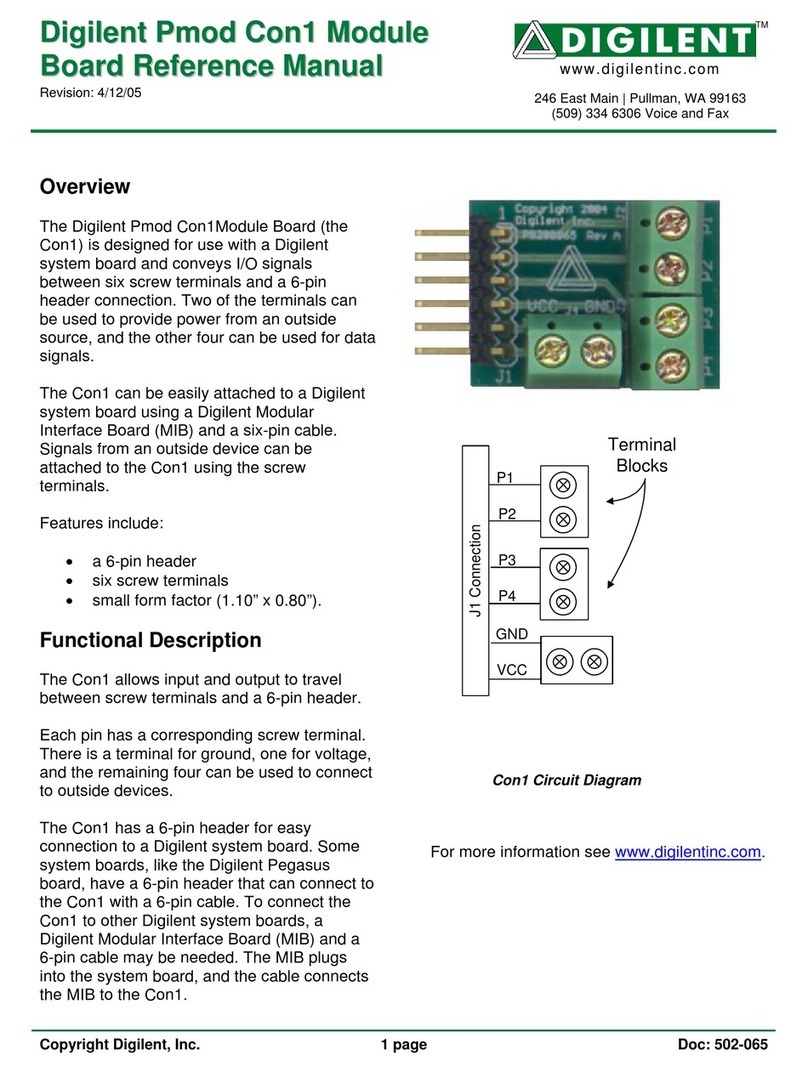
Digilent
Digilent Pmod Con1 Module Board User manual
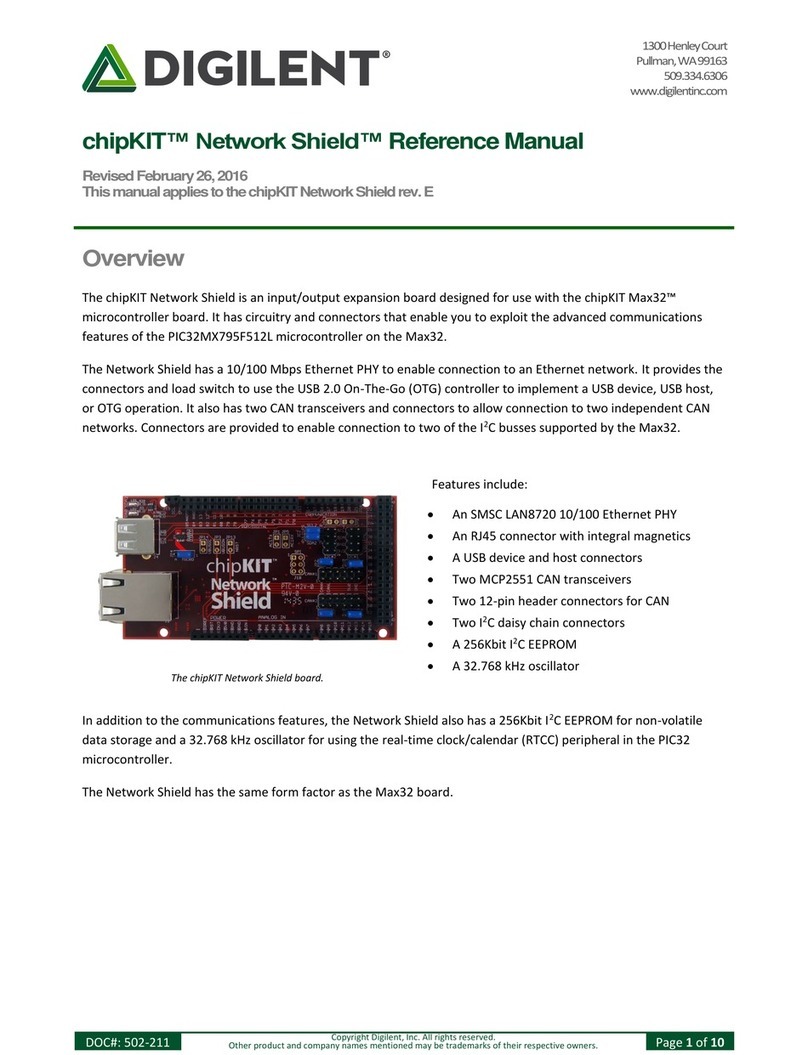
Digilent
Digilent chipKIT Network Shield User manual
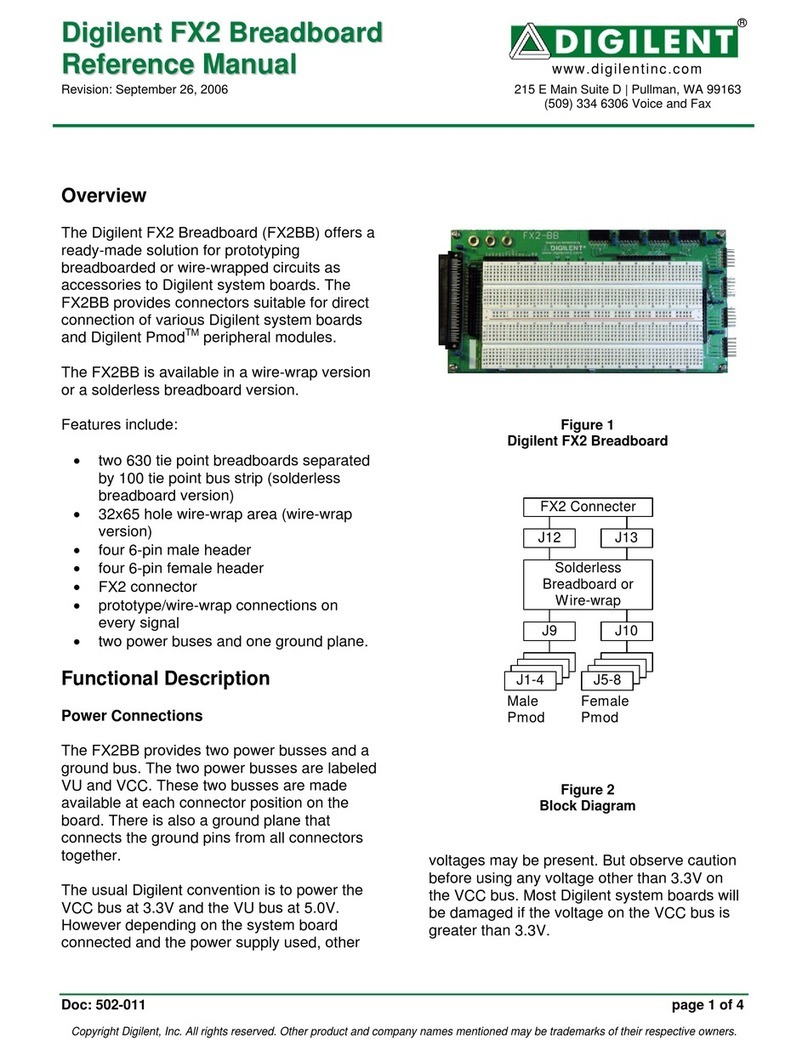
Digilent
Digilent FX2 User manual
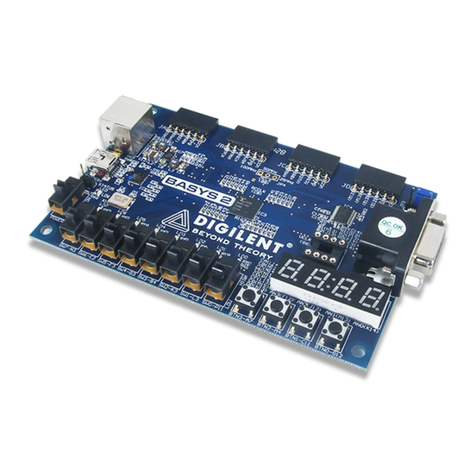
Digilent
Digilent Basys 2 User manual
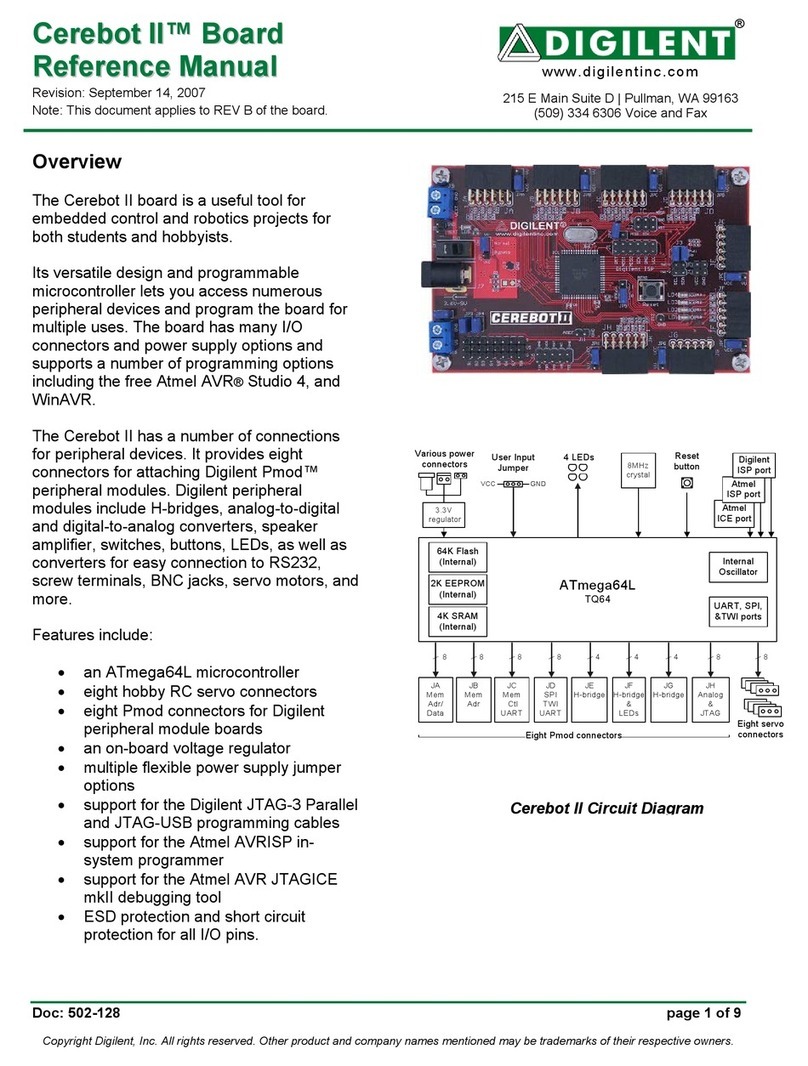
Digilent
Digilent Cerebot II User manual
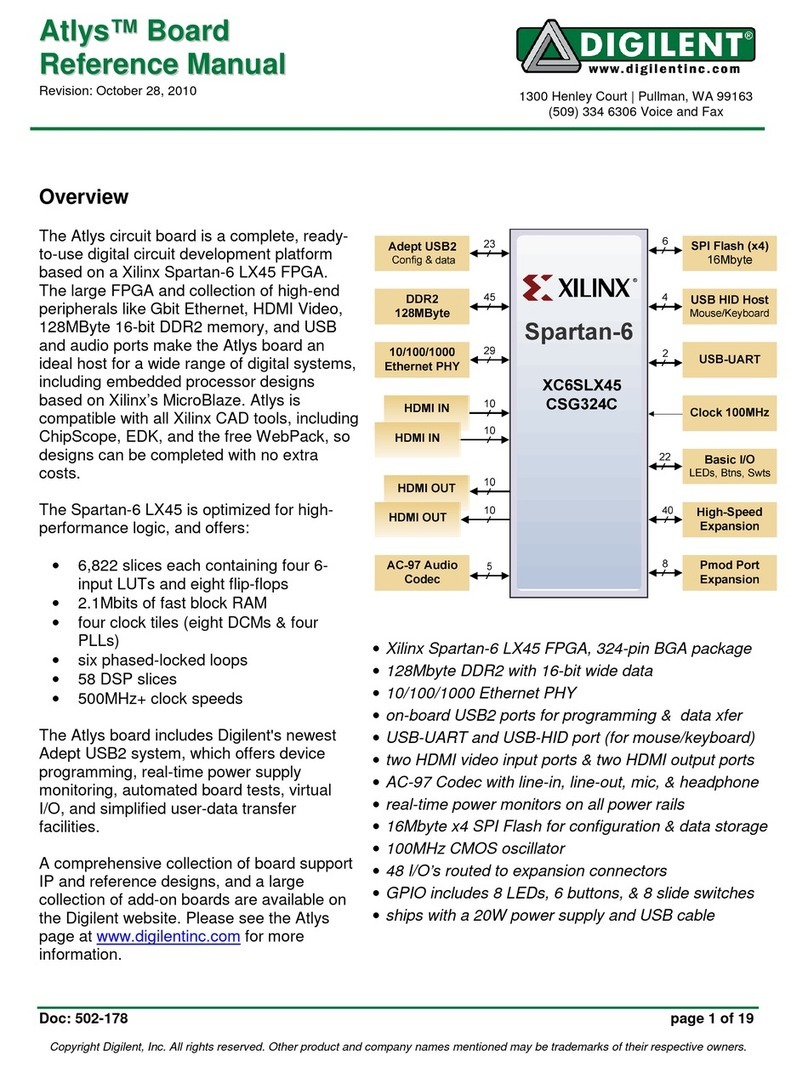
Digilent
Digilent Atlys User manual
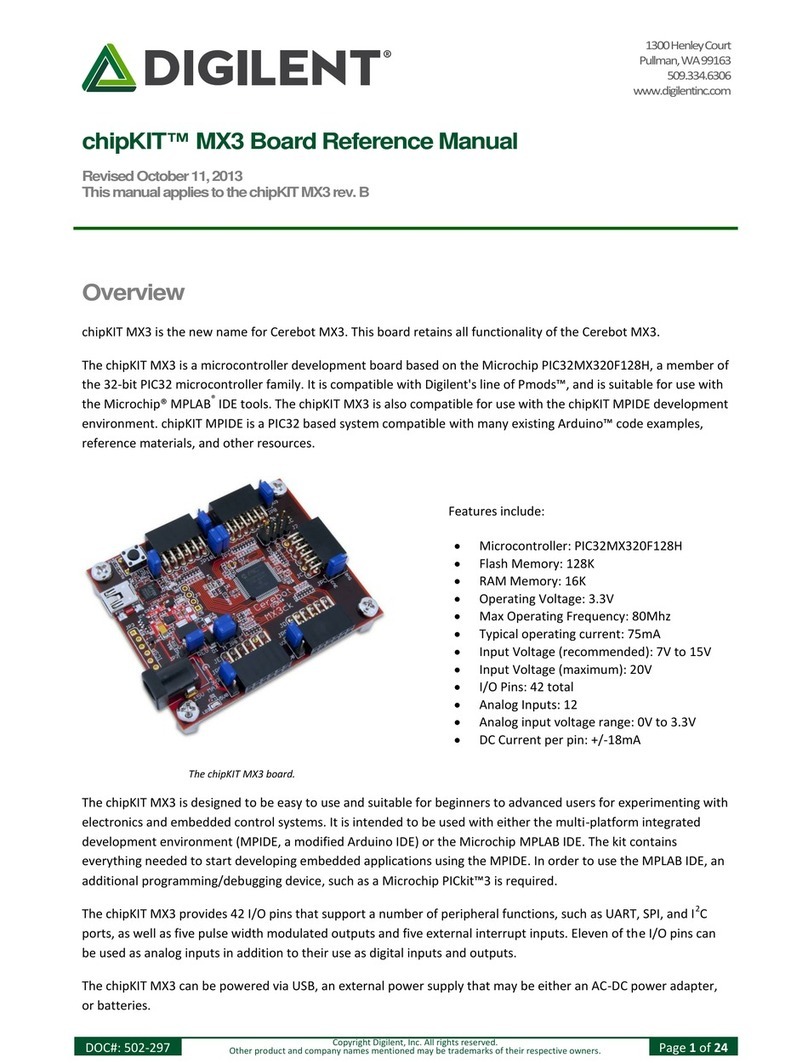
Digilent
Digilent chipKIT MX3 User manual
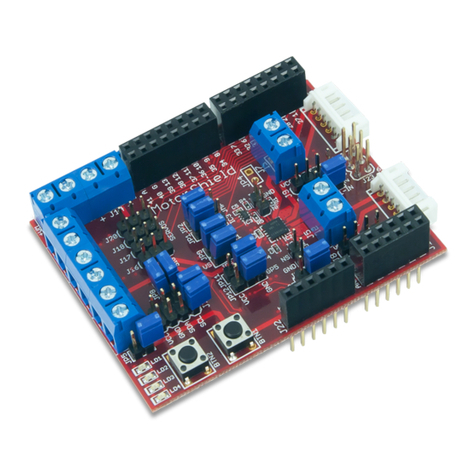
Digilent
Digilent chipKIT Motor Shield User manual
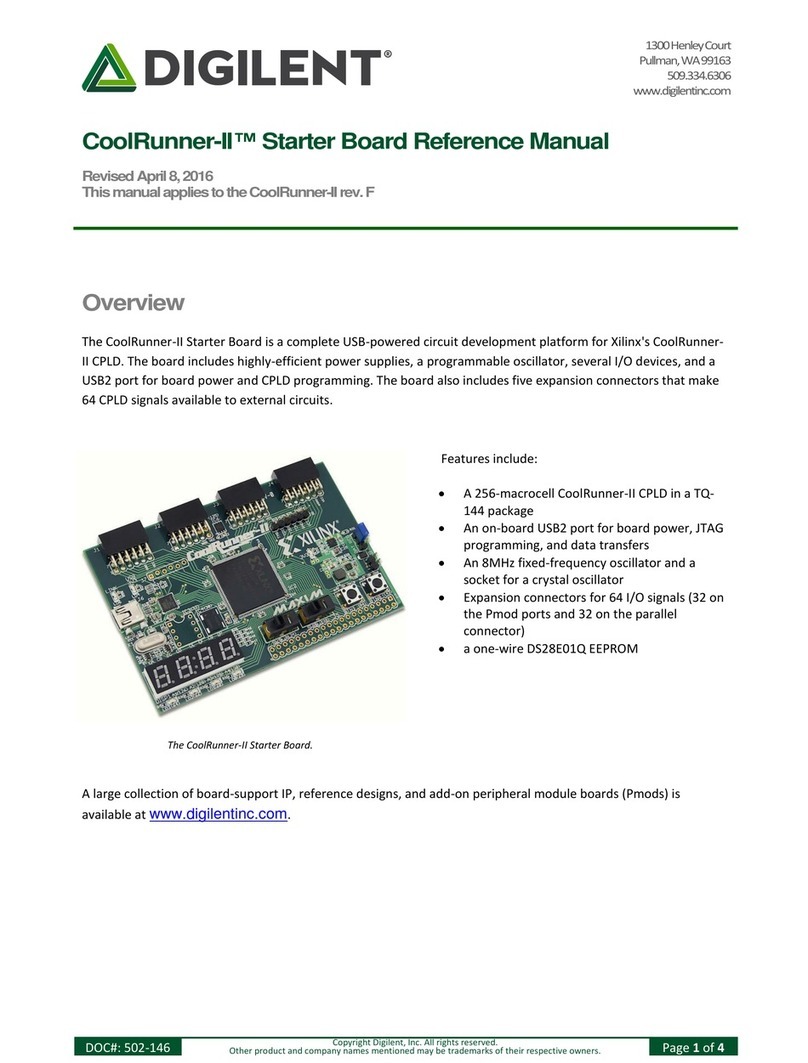
Digilent
Digilent CoolRunner-II User manual
Popular Computer Hardware manuals by other brands
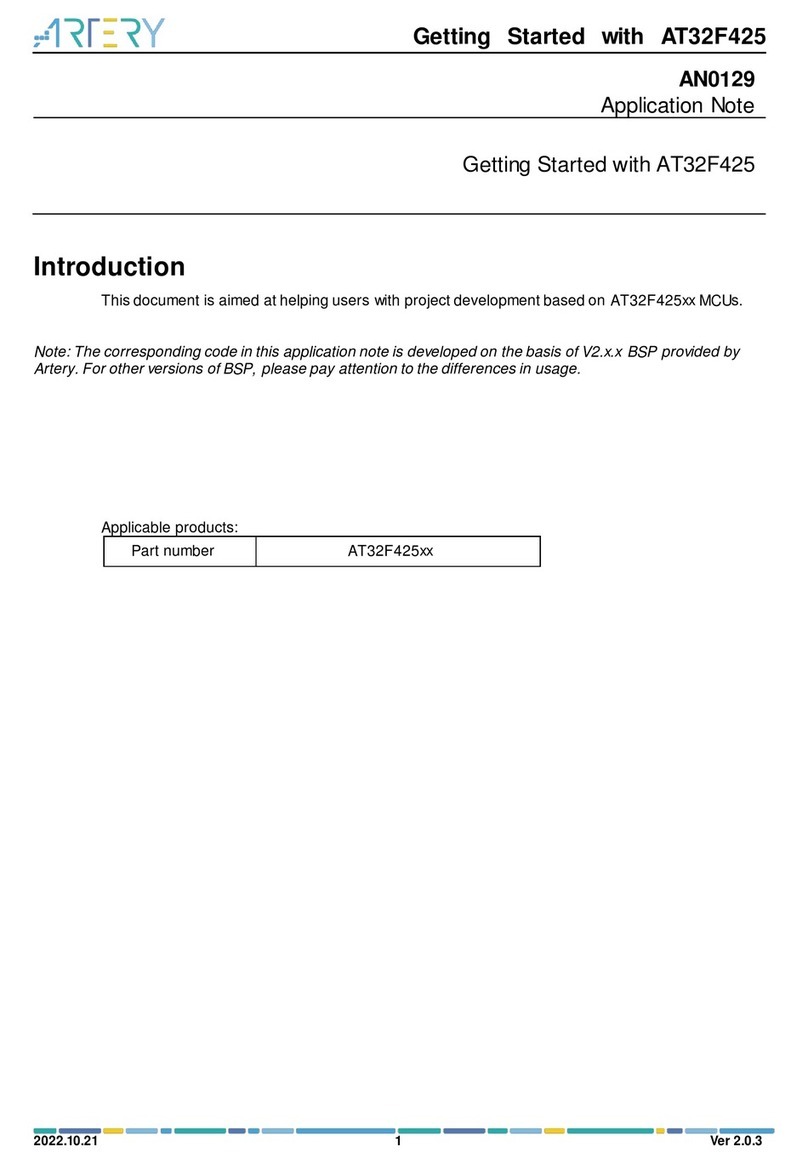
ARTERY
ARTERY AT32F425 Series manual
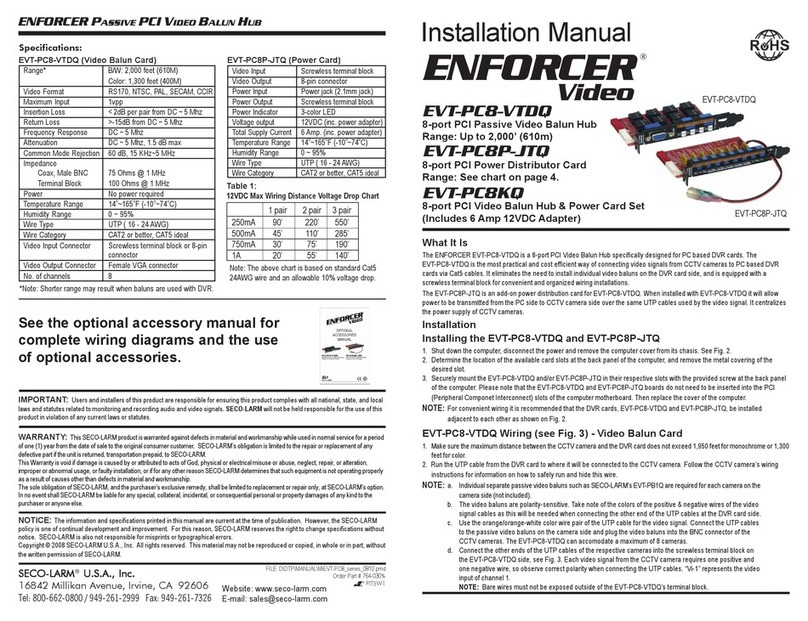
SECO-LARM
SECO-LARM ENFORCER EVT-PC8-VTDQ installation manual
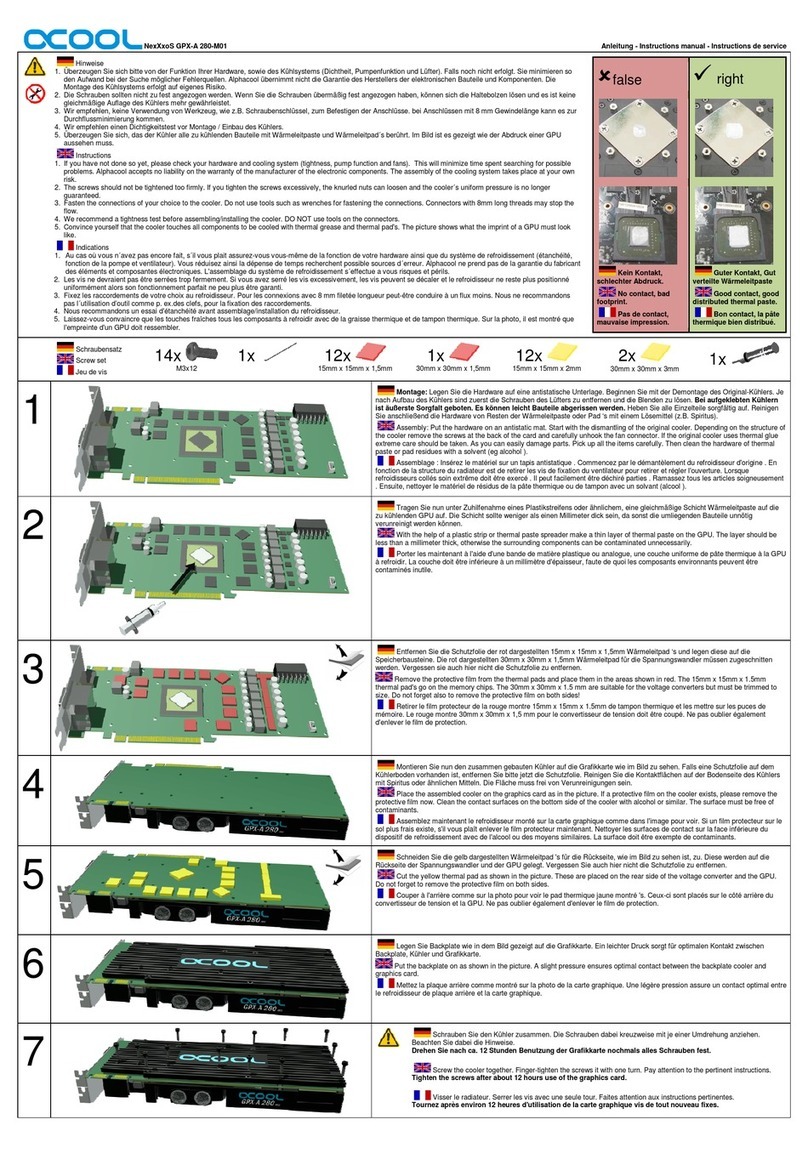
Alphacool
Alphacool NexXxoS GPX-A 280-M01 quick start guide

ekwb
ekwb EK-FC7850 Installation and mounting manuals
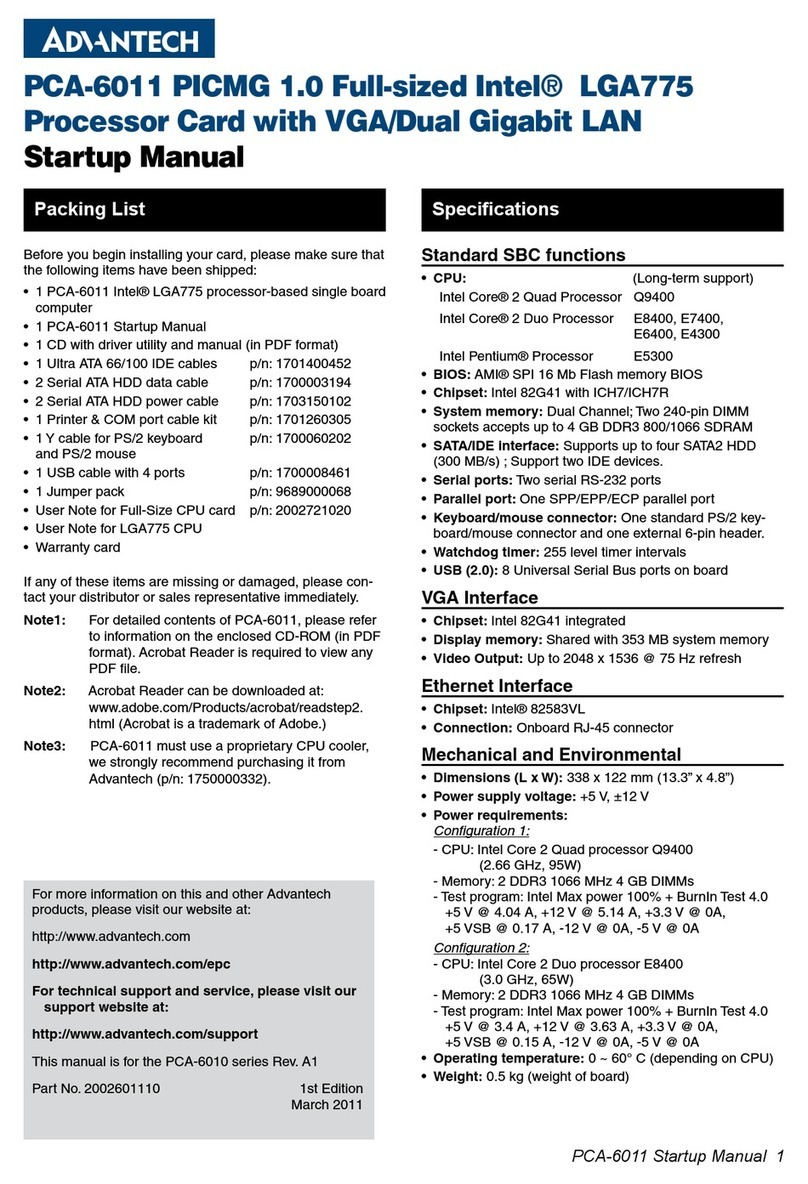
Advantech
Advantech PCA-6011 Startup manual

Inovonics
Inovonics NOVIA 272 Installation & user guide
